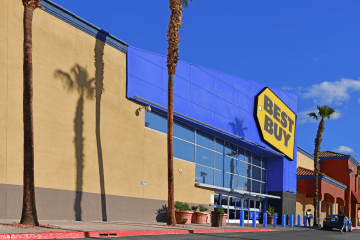
Unity targets Amazon ‘last mile’ logistics assets
As business from e-commerce grows, Unity is targeting for acquisition, mission-critical last-mile distribution facilities leased to Amazon and major shipping companies such as UPS, DHL, and FedEx.
Chicago, 14. July 2023
10 min. read
As business from e-commerce grows, Unity is targeting for acquisition, mission-critical last-mile distribution facilities leased to Amazon and major shipping companies such as UPS, DHL, and FedEx.
Preference will be given to small to medium sized properties that have operating history, service affluent districts, that have structured rent reviews and a GAV of between $15 - $25m.
What does “last mile” mean?
The term "last mile" was adopted from the telecommunications industry which faced difficulty connecting individual homes to the main telecommunications network. However in supply chain management, the “last mile” as it has become known, describes the difficult last leg in the transportation of goods from hubs to final destinations which is becoming ever more relevant as the number of business-to-consumer (B2C) deliveries grow especially from e-commerce companies in freight transportation. Typically, this actual “last mile” can range from a few blocks up to a 2-hours (120km) driving distance.
Why is last mile logistics now coming to the fore?
Generally speaking, the increased focus on the final leg of delivery can be attributed to consumers having become more demanding and the explosion of e-commerce and B2C delivery volume.
While the structural shift in retail from 'bricks to clicks' (online sales) started in earnest years ago, it has been accelerated by the pandemic and with competition heating up, customers have grown more demanding, with an increasing number willing to pay a premium for getting their orders sooner.
Receiving their orders next week, or even in a few days, is hardly meeting expectations now. Accordingly, e-commerce players are responding by upping their game in this competitive arena to next day, same-day or even near-instant delivery.
Bringg’s recent global survey found that incredibly, 99% of retailers plan to offer same-day delivery by 2025, up from the current 35% that are able to do so today. Only 29% feel they are currently doing a good job with their delivery performance. To this end, market players are thinking out of the box and looking to drone, robot and route optimization technologies for solutions. Whichever creative solution, last mile logistics is a crucial element to allow shippers to get more products to consumers faster.
'Reverse logistics' and returns processing
As e-commerce players are not just competing to get their products into the hands of the consumers sooner and faster but to also place more products in the customers’ laps, last mile logistics also plays an instrumental role in 'reverse logistics' - i.e. returns processing.
While retailers encourage more trigger-happy customer behaviour, they are scrambling to put in place reliable, convenient and efficient returns / replacement systems which go a long way towards improving their customer satisfaction and retention. According to e-commerce consultant Invesp, at least 30% of all products ordered online are returned.

Other mega-forces at play
Traditional supply chains used to focus on scale- and cost-efficiencies to the detriment of supply chain resilience. If anything, the COVID-19 pandemic has exposed some of these vulnerabilities. Huge hub-and-spoke, just-in-time supply models that were overly concentrated on limited channels experienced major disruptions in recent years as a result of e.g. the US-China trade war, the Suez Canal incident, the resultant spike in shipping/freight costs, shortages of LGV (large good vehicle) drivers – all tested the resilience of supply chains.
With protracted and elevated geopolitical risks, even manufacturers have responded with re-shoring or near-shoring operations to be closer to end consumers. Again, enter the last mile logistics which allow suppliers to manage goods stocking and inventory more robustly to mitigate shocks to the larger supply chain.
Solid investment fundamentals
The demand fundamentals for last mile logistics real estate are unassailable and therein lies the appeal from a real estate investor’s perspective.
Being close to consumers within built-up, urban areas comes with a unique set of challenges for e-commerce merchants. Land supply is scarce in such areas as compared to operating out of a huge warehouse many miles outside of cities and to be operated efficiently, last mile logistics assets need to check off numerous boxes – e.g. access to major transport infrastructure, proximity to consumers and workers, within planning zones that allow for such usage – and all this while fending off competing real estate uses.
Locations that are not already approved for this usage face an arduous journey and risks going through the planning approval process, especially in jurisdictions saddled by highly vocal residents and nimby-ism (i.e. the acronym for 'Not-In-My-BackYard'), – a characterisation of opposition by residents to proposed developments in their locality.
Accordingly, this all boils down to the making a of a solid investment case given the explosion in need for last mile logistics coupled versus the constrained supply.
Sources: Unity Capital Partners, JLL & CBRE Industrial Research, 2022 Bringg Barometer: State of Retail Delivery & Fulfillment and Invesp.
Media Inquiries
For all press and media enquiries, please contact: media@unity.capital.
Share





